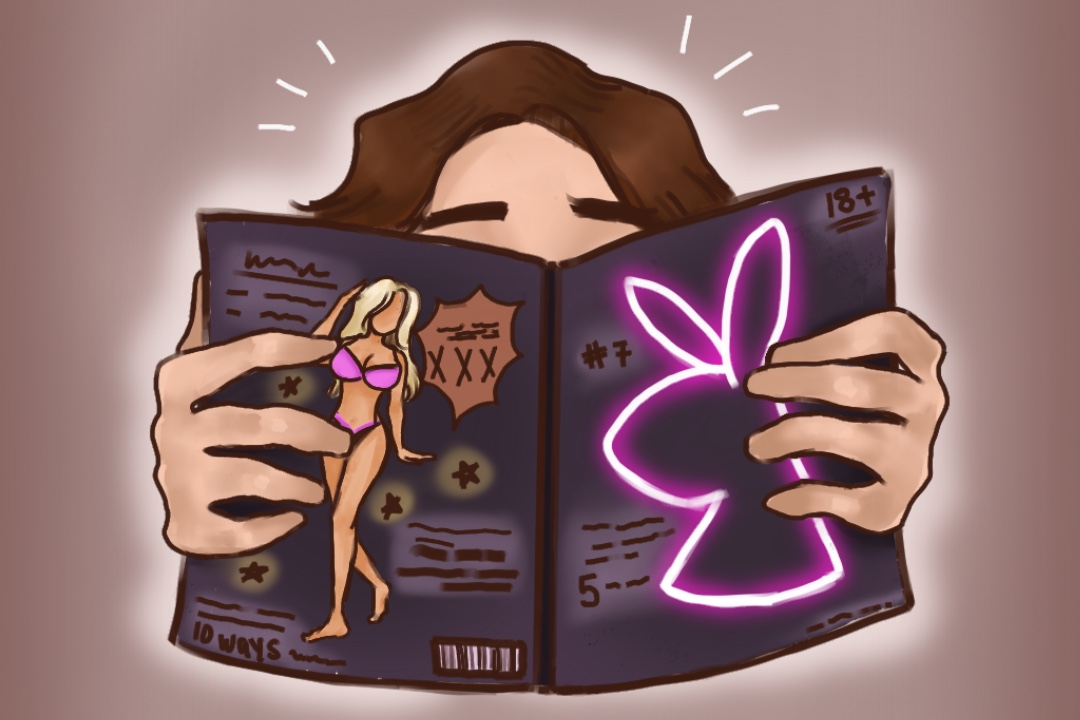Nestled in the lower levels of beautiful University College, in the Brian Pronger Reading Room, is a massive porn stash.
Yes, you read that right.
It seems as though the college’s motto — “To shed light on that which is obscure” — rings true. “Parum claris lucem dare” indeed.
Okay, it’s not exactly a ‘stash.’ Not in the way that you might think, anyway.
The Bonham Centre for Sexual Diversity Studies’ Sexual Representation Collection forms an essential part of sexual diversity studies at the University of Toronto, aiding in both recovery and preservation of pornographic artifacts with its archives.
From film to unique ephemera, the collection boasts roughly 10,000 pieces of sexual media from as early as 1907, putting it in first place for the largest archival collection of pornography in Canada. With an emphasis on feminist, kink, and queer pornography, the collection is widely representative of the history behind sex media and sex work.
Needless to say, this is more than just an archaic porn collection. Over the past year, valiant efforts have been made to digitize this collection in light of preservation and increasing accessibility to researchers. In a recent event titled “Fast Forwarding Porn: Digitization and Its Discontents,” faculty and students, who work with the collection, discussed the process and challenges of digitizing porn.
You might be wondering, where exactly is the Bonham Centre getting all of this porn? Often, this genre of media conveniently slips through the cracks of history, and aside from Barney Stinson, not many people take inventory of their pornography. Nevertheless, the content is frequently uncovered by civilians and donors, alongside the centre’s efforts to dig up old media, much like any historical artifact.
So, why exactly are we archiving pornography? At first glance, it might seem odd to try to immortalize such a genre of media, but historical knowledge is best understood through primary sources.
As the Bonham Centre is trying to prove, sexual diversity studies is no different. It’s especially important to make attempts to maintain history that amplifies LGBTQ+ and feminist voices, but alas, the adult film industry leaves a thin paper trail.
Presenters in the event noted that while traditional libraries and archives don’t exactly embrace the long-term legacies of adult film, those specializing in sexual diversity studies experience a special kind of work: a methodologically complicated and confined effort. Pornography often gets a bad reputation, but the Bonham Centre looks past this stigma to zealously preserve history first.
Don’t get it twisted, though. Archiving and digitizing pornography isn’t all glamourous work. The process of archiving and the technology around it is easily fetishized, but truly, the process is tedious, requiring both time and troubleshooting. Dealing with media formats that include VHS and 35 millimeter film often means that frames are damaged. And, despite their quality, these tapes quite often max out at eight hours of content each.
If this isn’t enough, it surely doesn’t help that VCRs are nearly obsolete, which proves quickly that digitizing older forms of media isn’t as simple as it may appear.
Building archives is a job that asks several thorned questions: what do we want to save? And how exactly will we do it? Theoretically speaking, archives exist on the internet to some extent, but for one thing, the rapid evolution of the web means that preservation will become trickier as time progresses, and for another thing, pornography has existed long before the internet.
Archiving pornography isn’t just about pornography, though. Scholars at the Bonham Centre’s event noted that the implications of streaming and sharing files globally, as well as digitizing older formats of film are topics that aren’t as prioritized by universities.
The Bonham Centre’s project raises questions about digital infrastructure gaps that exist in Canada, and can be a helpful example in different conversations about the limitations and long-term issues that arise when thinking about the digital world.
Despite its unique demeanour, adult film is a genre of artifacts that is often overlooked. A mixture of digital and print media, the Bonham Centre’s collection is a monument of the rich history behind sexual diversity studies. We’ve known for years now that human history is dependent on representation, and that includes all forms of media — even porn.
While digitization doesn’t solve all historical problems, it’s certainly a step that ensures the preservation of sex media and sex work, while also prompting us to think about the gaps that we have yet to bridge in the digital world. The totality of our time isn’t corroborated through just one form of media, and we’re only just beginning to understand the implications that come with this.
As our vantage point shifts and evolves, we see multiple timelines embedded within history, rather than a fixed chronology. While history is not neutral or synonymous with truth, it is composed of countless intertwined voices. It is the sounds of these voices that build up the picture that we have of the past.
Perhaps, with the process of archiving, we can amplify the cacophony.
If you’re interested in learning more, the Bonham Centre is holding a virtual event, “Sex in the Archives,” on February 22 at 4:00 pm where panelists will touch on the preservation of the history of sex work, sexual representation, and sex education.


